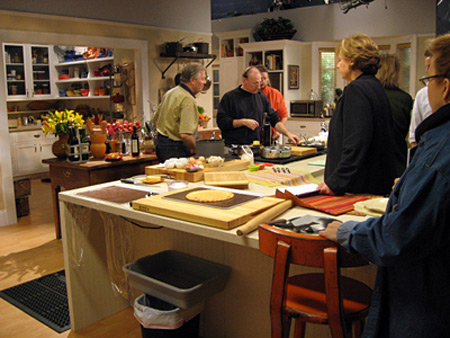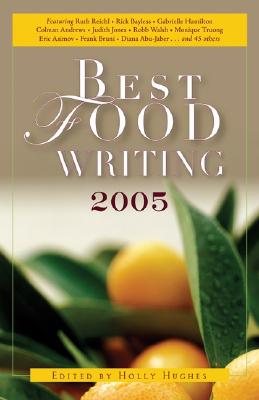 | ||||||||||||
|
|

The biggest problem with this Fast Food My Way recipe is that there are two proofing stages. The first is a manageable hour but the second -- the SECOND! -- is 12 to 14 hours. Many of you bakers or bread eaters out there will shrug that off and say, "Well, that's bread." Of course it is. In your own home with your pots and pans and lowered stress levels and lack of cameras and production crews and deadlines and budgets and a chef you've adored for ten years, "that's bread." However, consider that after those 12-14 hours, it's the next day. It's the day of filming. Consider that if I found that the bread didn't proof correctly over those 12-14 hours, there's no recourse at all. None. Nada. Zip. The next day, the day of filming, the 12-14 hour blocks of time are gone. Meanwhile, after the first hour of proofing the dough didn't really seem to be doing much. It barely rose at all, in fact. So, I dumped the soggy mass of paste and started again. This time, I bloomed the yeast in a little sugar -- something I had been taught in culinary school -- to a. make sure the yeast was viable; and b. give it a kick start. I also parked the proofing pots on the back of the stove because given our location near KQED's loading dock, where the dock was always open to the elements, the kitchen could get pretty nippy. Using the pre-bloomed yeast, the dough finally rose and burped to the desired puffy heights. David suggested I get two separate 12-14 hour rises underway to cover ourselves. I opted for three. David just smiled and shook his head at my continued agitation. Given how prepared associate producer Kristy was with our set equipment in making sure we had nearly six times the amount we needed for this particular recipe, I could have easily done four pots. (You must understand, that when you are "twinning" a recipe for television, the pots, pans, lids, pressure cookers, blenders, or food processors used on the set have to be matched exactly with what we are using in the back, so we always had at least two of everything.) With this recipe, I almost erred on the side of excess until I remembered that one pot had to be saved to show the 1 hour rise and another one was needed for the first stage. For those of you keeping track at home, that makes four different stages of bread prep that needed to be filmed: the unmixed ingredients, the 1-hour rise, the 12-14 hour rise, and the final product. The three Cuisinart brand pots were carefully covered in plastic wrap, precisely labeled with their start times on masking tape, and stowed in the prep fridge. Now, all I had to do for 12-14 hours was wait. And worry. On my copy of the recipe, I calculated the timing of each pot and realized that the maximum rise time of the first pot would be finished at 6:15 AM. I mentioned this to David who tossed back, "You'll just have to come in early to take it out." Oookay! My already long days were just about to get longer. But it was the last day, right? I could handle setting my alarm for 4:00 AM after sleeping off a painful 12-hour day and dragging my destroyed muscles down to the studio where I would pull the bread and then have nothing to do for an hour, right? Pulling off my coat at the end of the day, I told David I'd see him at 6:30. He stared at me. "Stephanie, I was kidding -- you don't actually have to come in that early! The bread will be fine!" Oh. Well. Good. Of course, it really wouldn't have mattered because it's not like I slept very much that final night. From David to Laura and down to all the other cooks, everyone had assured me that the bread would turn out fine. Which was all well and good, but it wasn't their recipe. It was my recipe, my responsibility. If it all went pear-shaped, I would be the one holding the multiple pots of ruined bread. Next morning, I pulled all three pots and hesitantly peeled back the plastic to show Jacques the result of the long, slow rise. He peered in and nodded. It was fine. It would work. My mind jumped to the next bullet point on the stress list: sure, the 12-14 hour rise would look good on television but how would it bake off? (Stay tuned for "Cooking with Jacques: Bread in a Pot, Part Three.")
| |||||
|
| |||||
|
|
|




